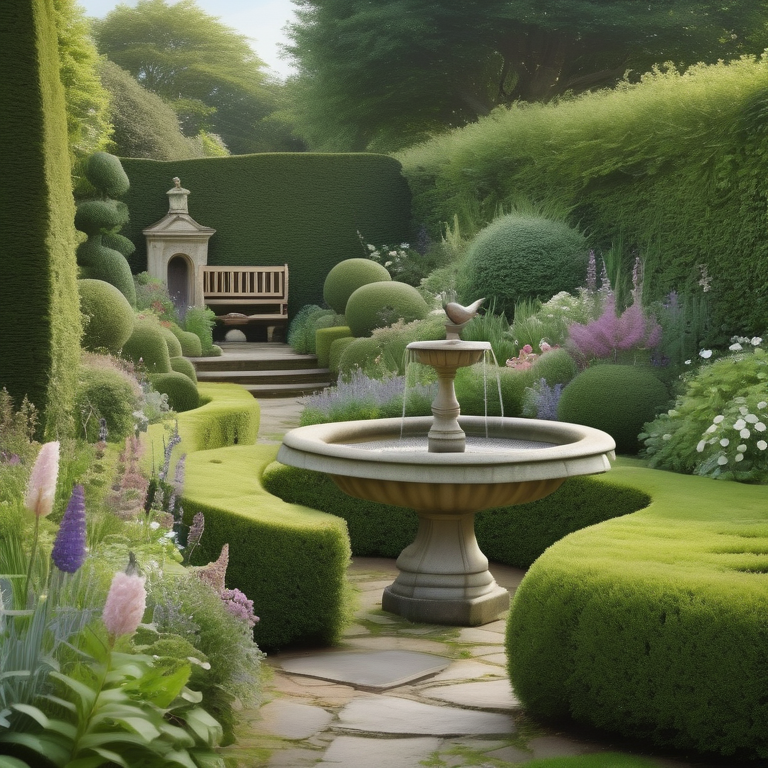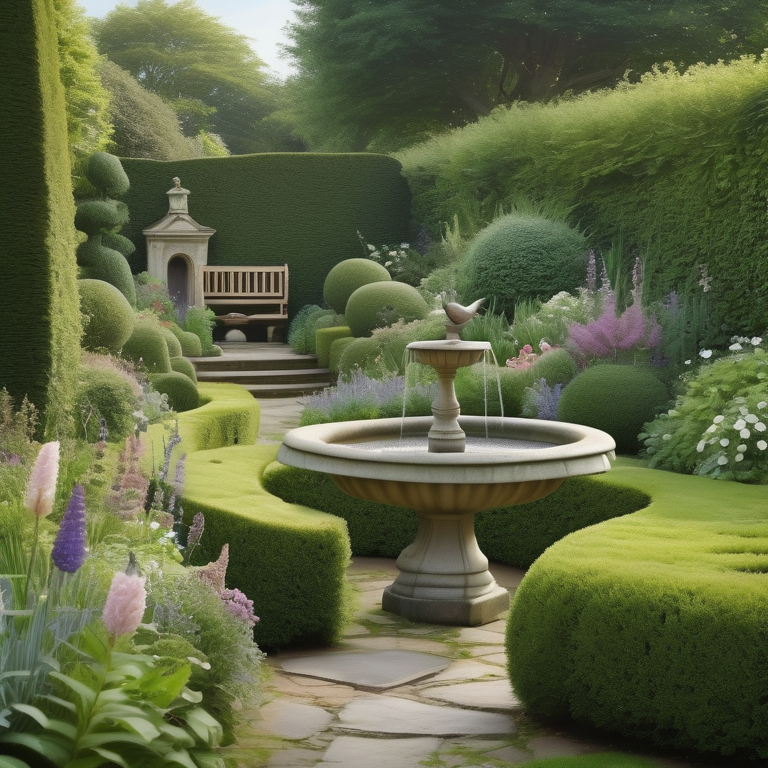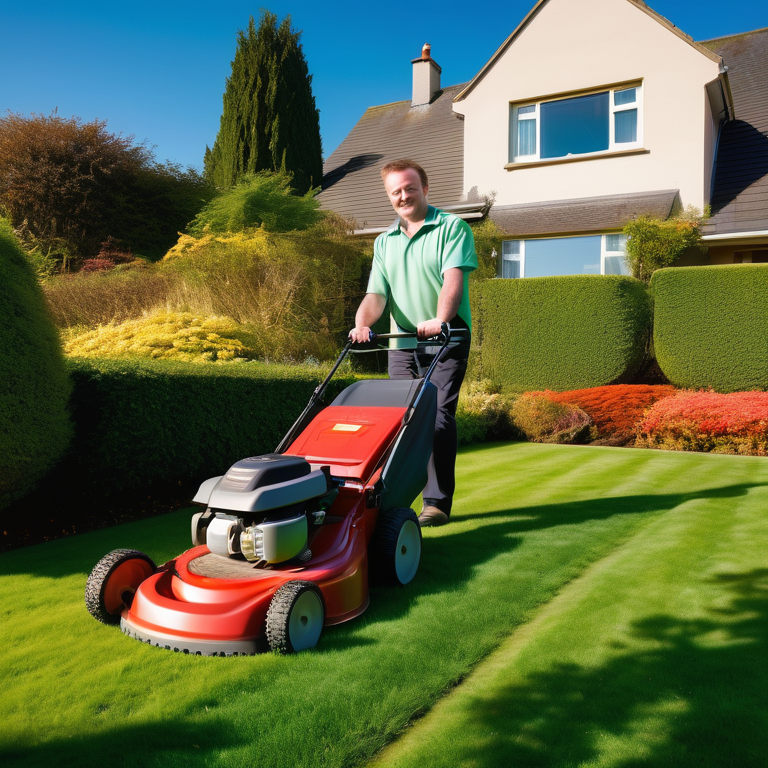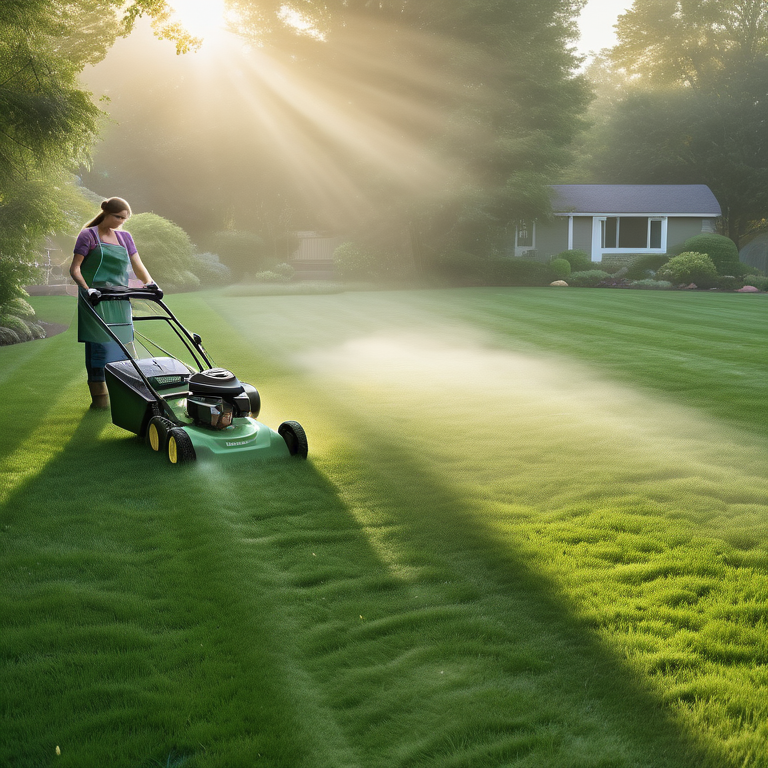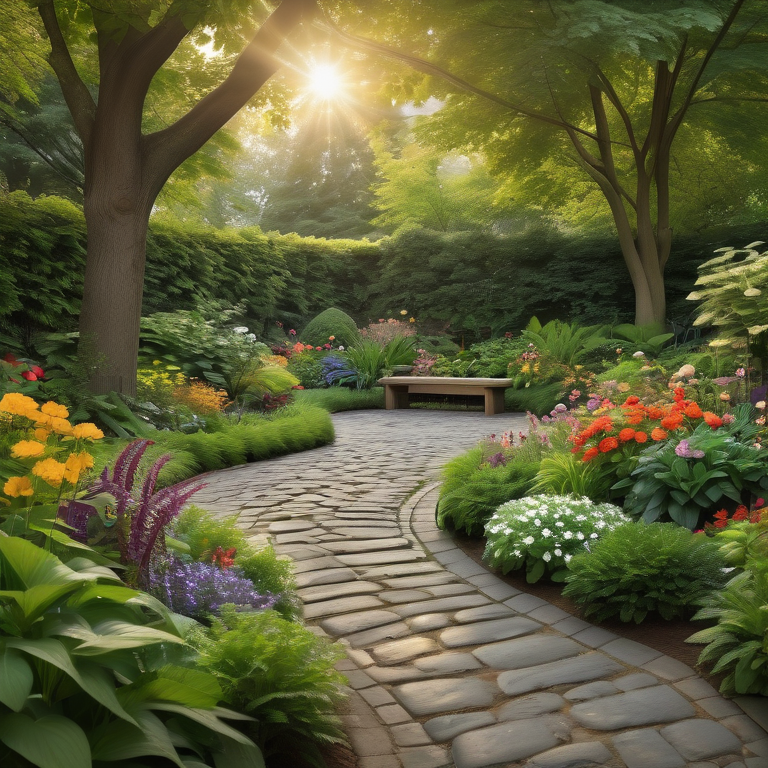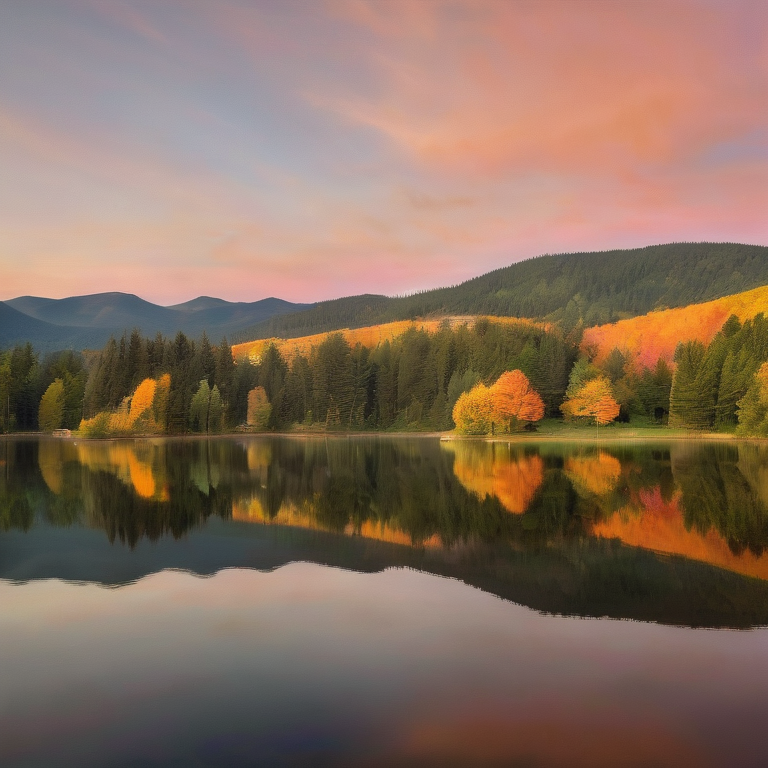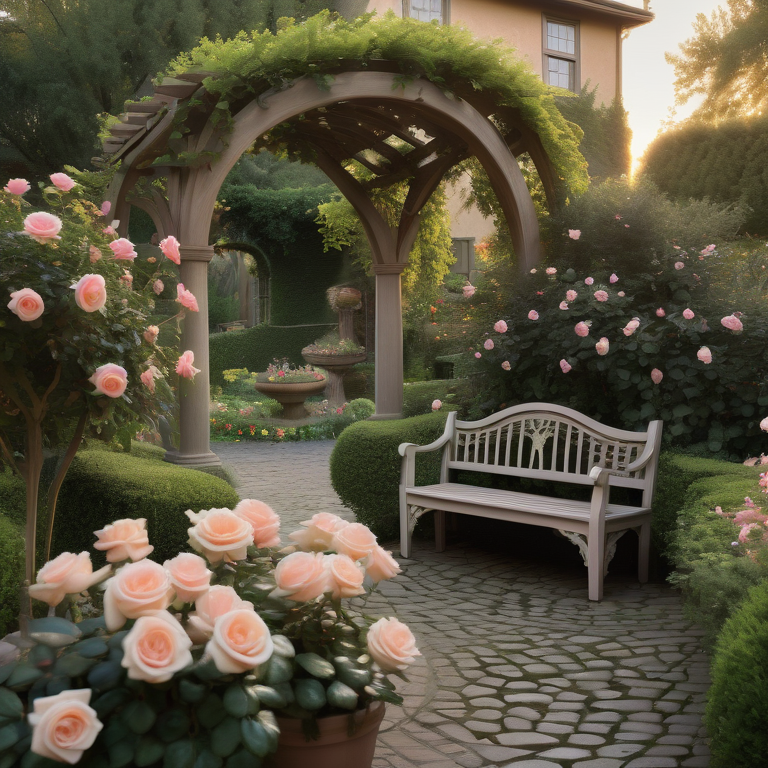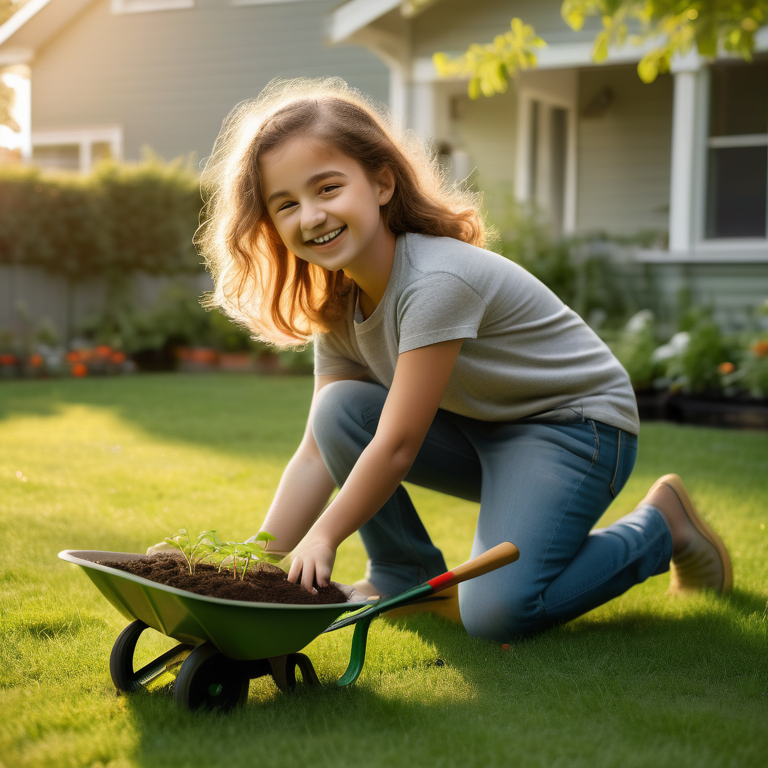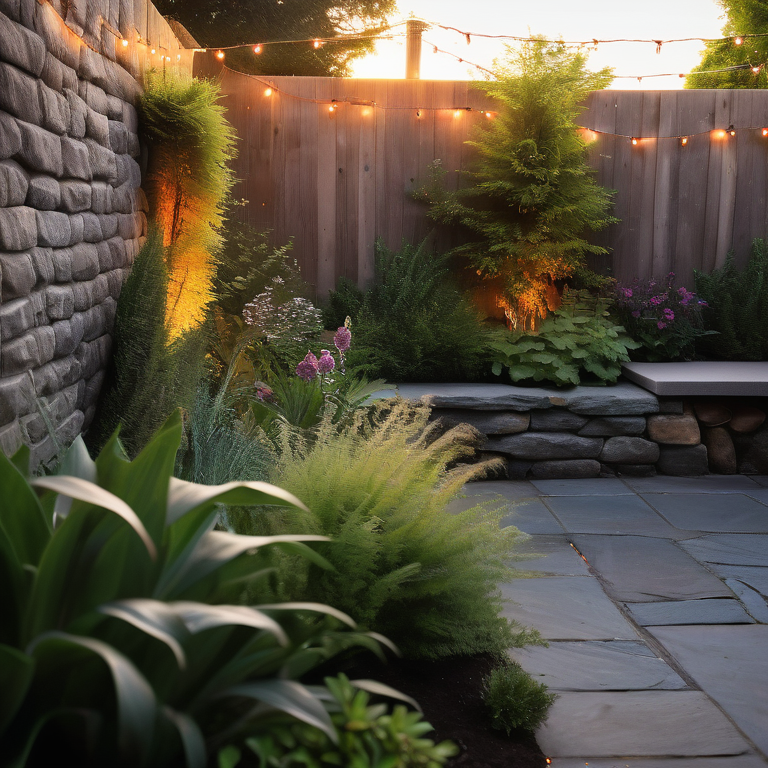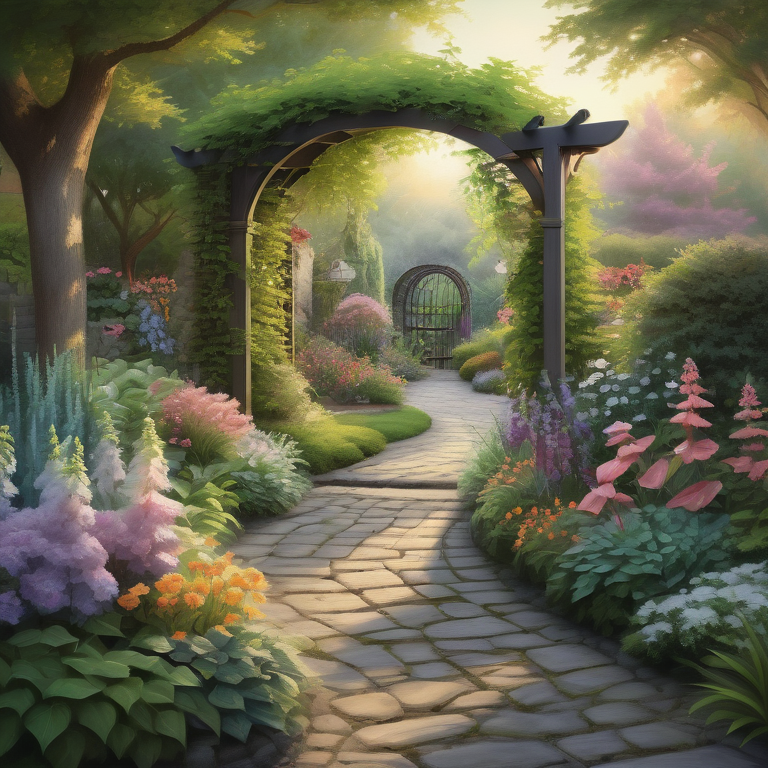Key Highlights
- British garden design incorporates lush lawn areas, traditional flower beds, classic garden pathways, water features, hedging and topiaries, secluded seating nooks, distinctive plant varieties, garden structures, wildlife-friendly spaces, and year-round color and interest.
- Creating a British garden allows you to embrace the essence of country living and highlight seasonal changes in your landscape.
- Planning your British garden involves assessing your space and choosing the right plants that thrive in your climate.
- Maintaining a British garden requires seasonal gardening tips and sustainable practices to ensure the longevity of your garden.
- Inspirational British gardens to visit include historical estates and gardens as well as modern interpretations that showcase the beauty of British garden design.
Introduction
British garden design is known for its timeless appeal, combining elements of formality and informality to create stunning outdoor spaces. Whether you have a small yard or a large property, you can incorporate the essential elements of British garden design to transform your outdoor space into a beautiful and inviting oasis.
In this blog, we will explore the 10 must-have elements for British garden design, including lush lawn areas, traditional flower beds, classic garden pathways, water features, hedging and topiaries, secluded seating nooks, distinctive plant varieties, garden structures, wildlife-friendly spaces, and year-round color and interest. These elements will help you create a sense of place and capture the essence of British garden style in your own yard.
We will also discuss the key takeaways of British garden design, including the importance of understanding the essence and history of the style, as well as the emphasis on seasonal changes and planning your own British garden. Additionally, we will highlight some inspirational British gardens that you can visit to gain further inspiration for your own garden design.
So, whether you’re starting from scratch or looking to enhance your existing garden, let’s dive into the essential elements of British garden design and create a beautiful outdoor space that reflects your personal style and love for nature.
Essential Elements of British Garden Design
British garden design characterized by a harmonious blend of formal and informal elements that create a visually stunning and inviting outdoor space. The essential elements of British garden design include lush lawn areas, traditional flower beds, classic garden pathways, water features, hedging and topiaries, secluded seating nooks, distinctive plant varieties, garden structures, wildlife-friendly spaces, and year-round color and interest. These elements work together to create a sense of place and capture the essence of British garden style. www.wicklowlandscaping.ie
1. Lush Lawn Areas
One of the key elements of British garden design is the presence of lush lawn areas. A well-maintained lawn provides a beautiful backdrop for other garden features and allows for various activities such as picnics, games, and relaxation. To achieve a lush lawn, proper lawn care practices are essential. This includes regular mowing, watering, and fertilizing. Additionally, addressing any issues such as weeds or bare patches will help maintain the health and appearance of your lawn. Consider incorporating seating areas or walkways into your lawn to create visual interest and define different zones in your garden. A lush lawn area adds a sense of freshness and vitality to your British garden design, providing a welcoming space for both relaxation and recreation. www.wicklowlandscaping.ie
2. Traditional Flower Beds
Traditional flower beds are a quintessential element of British garden design. These beds are typically filled with a variety of flowering plants, including perennials that bloom at different times throughout the growing season. The key to creating beautiful flower beds is to carefully select plants that thrive in your climate and complement each other in terms of color, height, and bloom time. Consider incorporating a mix of annuals and perennials to ensure continuous color and interest in your flower beds. Proper maintenance, including regular watering, pruning, and deadheading, will help keep your flower beds looking their best. Traditional flower beds add vibrancy and fragrance to your British garden, creating a focal point and attracting pollinators such as bees and butterflies.
3. Classic Garden Pathways
Classic garden pathways are an essential element of British garden design. These pathways not only provide practical access throughout your garden but also add visual interest and define different areas within your outdoor space. When designing your garden pathways, consider using materials such as brick or stone pavers for a traditional look. Alternatively, you can opt for a more eco-friendly solution by using spaced flagstones, crushed gravel, or other permeable surfaces that allow water to percolate into the soil. Here are some key points to consider when creating classic garden pathways:
- Create meandering paths for a sense of intrigue and discovery.
- Use stepping stones or pavers to create a focal point or guide visitors to a specific area.
- Incorporate plants or moss between the pathway materials for a natural and inviting look.
- Add lighting along the pathways to enhance the ambiance and ensure safe navigation, especially at night.
Classic garden pathways add structure and elegance to your British garden, inviting visitors to explore and enjoy the beauty of your outdoor space.
4. Water Features for Tranquility
Water features are a popular element of British garden design, adding a sense of tranquility and serenity to outdoor spaces. From small fountains to grand ponds, water features create a soothing atmosphere and provide a focal point for relaxation and contemplation. Consider incorporating a water feature such as a fountain, pond, or birdbath into your garden design. The sound of running water and the sight of rippling reflections will create a calming ambiance and attract birds and other wildlife. When designing a water feature, ensure proper installation and maintenance to prevent issues such as leaks or excessive algae growth. A well-designed and well-maintained water feature adds a touch of elegance and natural beauty to your British garden, creating a peaceful oasis for both humans and wildlife. www.wicklowlandscaping.ie
5. Hedging and Topiaries
Hedging and topiaries are classic elements of British garden design, adding structure, formality, and visual interest to outdoor spaces. Hedging refers to the use of dense plantings, typically shrubs, to create borders, enclose garden rooms, and define pathways. Topiaries, on the other hand, involve shaping and pruning plants into formal shapes such as spheres, cones, or animals. When incorporating hedging and topiaries into your British garden, consider the following:
- Choose evergreen shrubs such as boxwood or yew for year-round structure and visual interest.
- Use hedging to create borders and enclose different areas of your garden, adding a sense of intimacy and privacy.
- Experiment with different topiary shapes and sizes to add whimsy and sophistication to your garden design.
- Regular pruning and maintenance are essential to keep hedging and topiaries looking neat and well-groomed.
Hedging and topiaries add a touch of elegance and formality to your British garden, creating a classic and timeless aesthetic that is sure to impress. www.wicklowlandscaping.ie
6. A Secluded Seating Nook
A secluded seatingok provides a cozy and intimate space within your British garden, allowing you to relax and enjoy the beauty your outdoor surroundings. Whether it’s a small patio, a garden room, or a tucked-away corner, a secluded seating area creates a private retreat where you can unwind with a book, sip tea, or simply soak in the tranquility of nature. When designing a seating nook, consider the following:
- Choose comfortable and weather-resistant furniture that complements the style of your garden.
- Add cushions, throw pillows, and blankets to create a cozy and inviting atmosphere.
- Incorporate shade elements such as umbrellas, pergolas, or trellises with climbing vines to provide relief from the sun.
- Use strategic plantings, such as hedges or tall shrubs, to create a sense of enclosure and privacy.
A secluded seating nook adds an element of relaxation and intimacy to your British garden, allowing you to fully immerse yourself in the beauty and serenity of your outdoor space.
7. Distinctive British Plant Varieties
Distinctive plant varieties are an essential element of British garden design, adding character, color, and texture to your outdoor space. British gardens are known for their diverse range of plant selections, including both native and introduced species. When choosing plants for your British garden, consider the following:
- Embrace the charm of traditional English garden plants such as roses, delphiniums, lavender, and foxgloves.
- Incorporate wildflowers and native plants that attract pollinators and contribute to a biodiverse ecosystem.
- Experiment with less common plant varieties to add uniqueness and intrigue to your garden design.
- Consider the seasonal interest of plants, including those that bloom in spring, summer, and fall, as well as those that provide winter color and structure.
Distinctive plant varieties allow you to create a garden that reflects your personal style and showcases the beauty and diversity of British flora. www.wicklowlandscaping.ie
8. Garden Structures: Arches and Gazebos
Garden structures play a crucial role in British garden design, adding architectural interest and creating focal points within the landscape. Two popular structures often seen in British gardens are arches and gazebos.
Arches: Garden arches are used to create stunning entrances and walkways. They can be adorned with climbing roses or other flowering vines, adding height and beauty to the garden. Arches also serve as transitions between different garden areas, creating a sense of flow and inviting exploration.
Gazebos: Gazebos provide a sheltered space for relaxation and entertainment in the garden. They can be used as outdoor seating areas or as a focal point in a garden room. Gazebos are often adorned with climbing plants, such as wisteria or honeysuckle, creating a picturesque and inviting atmosphere.
Both arches and gazebos add vertical interest and structure to the garden, creating visual focal points and enhancing the overall design. Whether you choose a simple arbor or an elaborate gazebo, these garden structures are essential elements of British garden design. www.wicklowlandscaping.ie
9. Wildlife-Friendly Spaces
Creating wildlife-friendly spaces is an important aspect of British garden design. By incorporating elements that attract and support wildlife, you can create a thriving ecosystem within your garden.
One way to create wildlife-friendly spaces is by planting native wildflowers. These flowers provide nectar and pollen for bees, butterflies, and other pollinators. Choose a variety of wildflowers, such as poppies, daisies, and cornflowers, to create a colorful meadow-like area that attracts a diverse range of wildlife.
Another important element is providing food and shelter for birds. Install bird feeders and birdhouses throughout your garden to attract different bird species. Planting trees and shrubs that produce berries and fruits also provides a natural food source for birds.
Additionally, consider adding a water feature, such as a pond or birdbath, to attract amphibians, insects, and birds. These water sources can also serve as a focal point in your garden.
By creating wildlife-friendly spaces, you not only enhance the biodiversity of your garden but also contribute to the overall health of the environment.
10. Year-Round Colour and Interest
One of the key elements of British garden design is achieving year-round color and interest. By carefully selecting plants and incorporating specific design elements, you can ensure that your garden remains vibrant and visually appealing throughout the seasons.
Evergreen shrubs are a valuable addition to any British garden as they provide structure, color, and interest even during the winter months. Boxwood, holly, and yew are popular choices for creating formal shapes and maintaining greenery throughout the year.
Incorporating plants with winter interest is another way to add color and texture to your garden during the colder months. Look for trees and shrubs with interesting bark, such as the Tibetan cherry or the paperbark maple. Ornamental grasses, such as Miscanthus or Pennisetum, can also provide visual interest with their feathery plumes.
Consider planting bulbs that bloom in different seasons to ensure a continuous display of flowers. Daffodils and tulips bring vibrant colors to spring, while snowdrops and crocuses can brighten up the winter garden.
By carefully selecting plants and incorporating evergreen shrubs, plants with winter interest, and seasonal bulbs, you can create a garden that provides year-round color and interest.
Key Takeaways on British Garden Design
British garden design is characterized by a combination of elements that create a unique and timeless look. Key takeaways from this blog include:
- Incorporate distinctive British plant varieties, such as roses, lavender, and foxgloves, to add charm and beauty to your garden.
- Include garden structures like arches and gazebos to create focal points and enhance the overall design.
- Create wildlife-friendly spaces by planting native wildflowers, providing food and shelter for birds, and adding a water feature.
- Achieve year-round color and interest by incorporating evergreen shrubs, plants with winter interest, and seasonal bulbs.
- Good garden design is about creating a sense of place and considering the needs of both the garden and the gardener.
By incorporating these elements into your garden design, you can create a beautiful and inviting space that reflects the essence of British garden design. www.wicklowlandscaping.ie
Understanding the Essence
The essence of British garden design is deeply rooted in the concept of country living and the beauty of the countryside. British gardens often reflect a sense of tranquility, harmony with nature, and a connection to the land.
The design elements used in British gardens, such as traditional structures, native plant varieties, and wildlife-friendly spaces, all contribute to creating an environment that embodies the essence of country living. These gardens are designed to be enjoyed and experienced, providing a sense of peace and a respite from the busy world.
Whether you live in the countryside or in an urban environment, incorporating elements of British garden design can bring a touch of the idyllic countryside to your own outdoor space. By creating a garden that reflects the essence of country living, you can create a haven to relax, unwind, and connect with nature. www.wicklowlandscaping.ie
Incorporating Historical Elements
Incorporating historical elements is an important aspect of British garden design. Many British gardens have a rich history and are often associated with stately homes, manor houses, and historical estates.
One way to incorporate historical elements into your garden is by using traditional structures and architectural features. This can include using old bricks or stone pavers for pathways, incorporating antique garden furniture or statues, and utilizing traditional garden structures like arches and gazebos.
Planting heritage plant varieties is another way to add a historical touch to your garden. These varieties have stood the test of time and are often associated with traditional British gardens. Roses, lavender, and foxgloves are all examples of heritage plants that can add a sense of history to your garden.
By incorporating historical elements into your garden design, you not only create a connection to the past but also enhance the overall aesthetic and charm of your outdoor space.
Emphasizing Seasonal Changes
Emphasizing seasonal changes is an important consideration in British garden design. British gardens are known for their ability to showcase the beauty of each season, from the vibrant blooms of spring to the rich colors of autumn.
To emphasize seasonal changes, consider planting a variety of flowers and plants that bloom at different times throughout the year. This ensures that your garden always has something in bloom, providing visual interest and color.
Incorporating trees and shrubs with colorful foliage is another way to highlight seasonal changes. For example, Japanese maples are known for their stunning autumn colors, while flowering cherry trees bring a burst of color in the spring.
Additionally, consider adding plants that produce berries or have interesting seed heads for winter interest. This adds texture and visual appeal to the garden during the colder months.
By emphasizing seasonal changes, you can create a garden that evolves and delights throughout the year, showcasing the beauty of each season. www.wicklowlandscaping.ie
Planning Your British Garden
Planning is a crucial step when it comes to creating a British garden. Whether you have a small space or a large yard, careful planning ensures that your garden design meets your needs and vision.
Assessing your space is the first step in the planning process. Consider the size, layout, and existing features of your garden. This will help you determine the best design elements and plant choices for your specific space.
Choosing the right plants is another important aspect of planning your British garden. Consider factors such as the amount of sun or shade your garden receives, soil conditions, and the overall aesthetic you want to achieve.
By taking the time to plan your British garden, you can ensure a successful design that reflects your style and provides a beautiful outdoor space for years to come.
Assessing Your Space
Assessing your space is an important step when planning your British garden, especially if you have a small garden or limited outdoor space. Understanding the size and layout of your garden will help you make the most of the available space.
For small gardens, consider creating garden rooms with different functions to make the space feel larger. Enclose these areas with hedging, fencing, screening, gates, or walls to create distinct areas within your garden.
If you have a larger garden, consider incorporating a garden room as a focal point or gathering area. This can be achieved by using structures like arbors, gazebos, or seating areas strategically placed throughout the garden.
By assessing your space and considering the size and layout, you can create a British garden design that maximizes the potential of your outdoor area, whether it’s small or large.
Choosing the Right Plants
Choosing the right plants is essential when planning your British garden. Consider factors such as the amount of sunlight your garden receives, soil conditions, and the overall aesthetic you want to achieve.
Selecting a mix of plant types, including perennials, annuals, and bulbs, ensures that your garden has visual interest and color throughout the seasons. Perennials are a popular choice for British gardens as they come back year after year, reducing the need for replanting.
When choosing perennials, consider their bloom time, height, and color to create a balanced and harmonious garden design. Mixing different heights and colors adds depth and visual interest to your borders and flower beds.
Additionally, consider planting bulbs for early spring blooms and annuals for quick bursts of color. By choosing the right plants for your British garden, you can create a dynamic and visually appealing outdoor space. www.wicklowlandscaping.ie
Maintaining a British Garden
Maintaining a British garden requires time, effort, and a commitment to sustainable practices. By following a few key maintenance tips, you can keep your garden looking beautiful and thriving.
Regular tasks such as watering, weeding, and deadheading are essential to the health and appearance of your garden. Proper pruning and trimming of shrubs and hedges help maintain their shape and promote healthy growth.
Incorporating sustainable practices, such as composting, using organic fertilizers, and conserving water, ensures that your garden is environmentally friendly and promotes biodiversity.
While maintaining a British garden can be hard work, the rewards are well worth it. A well-maintained garden not only adds beauty to your outdoor space but also provides a sanctuary for wildlife and a place to relax and enjoy nature. www.wicklowlandscaping.ie
Seasonal Gardening Tips
Gardening in a British garden requires seasonal care and attention. Here are some seasonal gardening tips to keep your garden thriving throughout the year:
Spring: Prepare your garden for the growing season by clearing debris, pruning shrubs, and applying mulch. Plant cool-season vegetables and flowers, and start seeds indoors for summer blooms.
Summer: Water regularly, especially during dry spells, and watch for pests and diseases. Deadhead flowers to promote continuous blooming. Provide shade and protection for delicate plants during heatwaves.
Autumn: Prepare your garden for winter by cleaning up fallen leaves, cutting back perennials, and planting spring bulbs. Ensure good drainage to prevent waterlogging during heavy rain.
Winter: Protect tender plants from frost and freezing temperatures by covering them or moving them indoors. Remove fallen leaves and debris to prevent disease.
By following these seasonal gardening tips, you can maintain a healthy and flourishing British garden throughout the year.
Sustainable Practices
Incorporating sustainable practices into your British garden not only benefits the environment but also promotes the health and longevity of your garden. Here are some sustainable practices to consider:
Water Conservation: Install a rain barrel to collect and reuse rainwater for watering your garden. Use drip irrigation systems to minimize water waste.
Composting: Create a compost pile using kitchen scraps, yard waste, and fallen leaves. Compost enriches the soil and reduces the need for chemical fertilizers.
Wildlife-Friendly Design: Plant native species and create habitat areas for birds, butterflies, and beneficial insects. Avoid the use of pesticides that can harm wildlife.
Reducing Waste: Use organic mulch to suppress weeds and retain moisture in the soil. Reuse materials like pots and containers instead of buying new ones.
By implementing these sustainable practices, you can create an eco-friendly and wildlife-friendly British garden that supports biodiversity and conserves resources.
Inspirational British Gardens to Visit
Visiting inspirational British gardens can provide a wealth of ideas and inspiration for your own garden design. Here are some notable gardens to visit in and around London:
- Kew Gardens: Known for its extensive collection of plants from around the world, Kew Gardens offers stunning landscapes, glasshouses, and iconic attractions like the Palm House and the Great Pagoda.
- Hampton Court Palace Gardens: Explore the historic gardens surrounding Hampton Court Palace, including the famous Privy Garden, the Great Vine, and the formal gardens designed by William III.
- Chelsea Physic Garden: This hidden gem is London’s oldest botanic garden, offering a peaceful oasis with medicinal and edible plants, a glasshouse, and a beautiful walled garden.
Visiting these and other British gardens can provide valuable insights into garden design, plant selection, and creating beautiful outdoor spaces.
Historical Estates and Gardens
London and its surrounding areas are home to many historical estates and gardens that showcase the rich heritage of British garden design. Here are some notable examples:
- Highclere Castle Gardens: Located in Hampshire, Highclere Castle is famous for being the filming location of the TV series “Downton Abbey.” Its gardens feature stunning landscapes, herbaceous borders, and formal lawns.
- Sissinghurst Castle Garden: This iconic garden in Kent was created by Vita Sackville-West and Harold Nicolson. It features distinct garden “rooms,” including the famous White Garden and the Rose Garden.
- Stowe Landscape Gardens: Located in Buckinghamshire, Stowe is a grand landscaped garden with stunning vistas, temples, and monuments. It showcases the ideals of English garden design from the 18th century.
Visiting these historical estates and gardens offers a glimpse into the past and allows you to appreciate the timeless beauty and design principles that have shaped British garden design throughout history. www.wicklowlandscaping.ie
Modern Interpretations
While historical estates and gardens offer insight into traditional British garden design, modern interpretations of garden design have also gained popularity. Contemporary British gardens embrace new design principles and often blend traditional and modern elements. Here are some examples:
- The Olympic Park Gardens: Created for the London 2012 Olympic Games, the gardens surrounding the Olympic Park in East London feature innovative and sustainable design, with a focus on biodiversity and ecological restoration.
- The Serpentine Gallery Pavilion: Each year, a different architect is commissioned to design a temporary pavilion in Kensington Gardens. These pavilions showcase cutting-edge architectural and garden design concepts.
- The Barbican Conservatory: Located in the heart of London, the Barbican Conservatory is a modern interpretation of a tropical garden. It features a wide variety of exotic plants and offers a unique urban oasis.
Visiting these modern interpretations of British garden design can inspire you to think outside the box and explore contemporary approaches to creating beautiful and functional outdoor spaces. www.wicklowlandscaping.ie
Conclusion
In conclusion, British garden design encompasses a harmonious blend of tradition and innovation, creating captivating outdoor spaces. From lush lawns to wildlife-friendly areas, each element plays a vital role in crafting an inviting garden retreat. By incorporating historical elements and seasonal changes, you can infuse character and dynamism into your garden. Remember to assess your space, choose suitable plants, and embrace sustainable practices for long-term garden maintenance. Whether visiting historical estates or exploring modern interpretations, draw inspiration from diverse British gardens to enrich your own outdoor sanctuary. Start planning your British garden with passion and creativity to transform your outdoor space into a picturesque haven. www.wicklowlandscaping.ie
Frequently Asked Questions
What Defines a British Garden Style?
British garden style is characterized by a combination of formal shapes, focal points, a sense of order. It incorporates distinctive British plant varieties and features elements like garden rooms, arches, gazebos, and layered mixed borders.
How Can I Adapt British Garden Design to My Climate?
You can adapt British garden design to your climate by selecting plant varieties that are suited to your region’s conditions. Consider the amount of sunlight, temperature extremes, and soil type in your area when choosing plants for your garden.
Are There Low-Maintenance British Garden Designs?
While British gardens do require some maintenance, there are ways to create low-maintenance designs. Choose plants that are suited to your climate and require minimal care. Incorporate structures like raised beds and containers to reduce weed growth and make maintenance easier.
How Do I Start Planning My British Garden?
To start planning your British garden, assess your space and consider your goals and preferences. Research different garden styles and plant varieties. Create a rough sketch of your garden layout and consider factors such as sunlight, soil conditions, and desired design elements.
